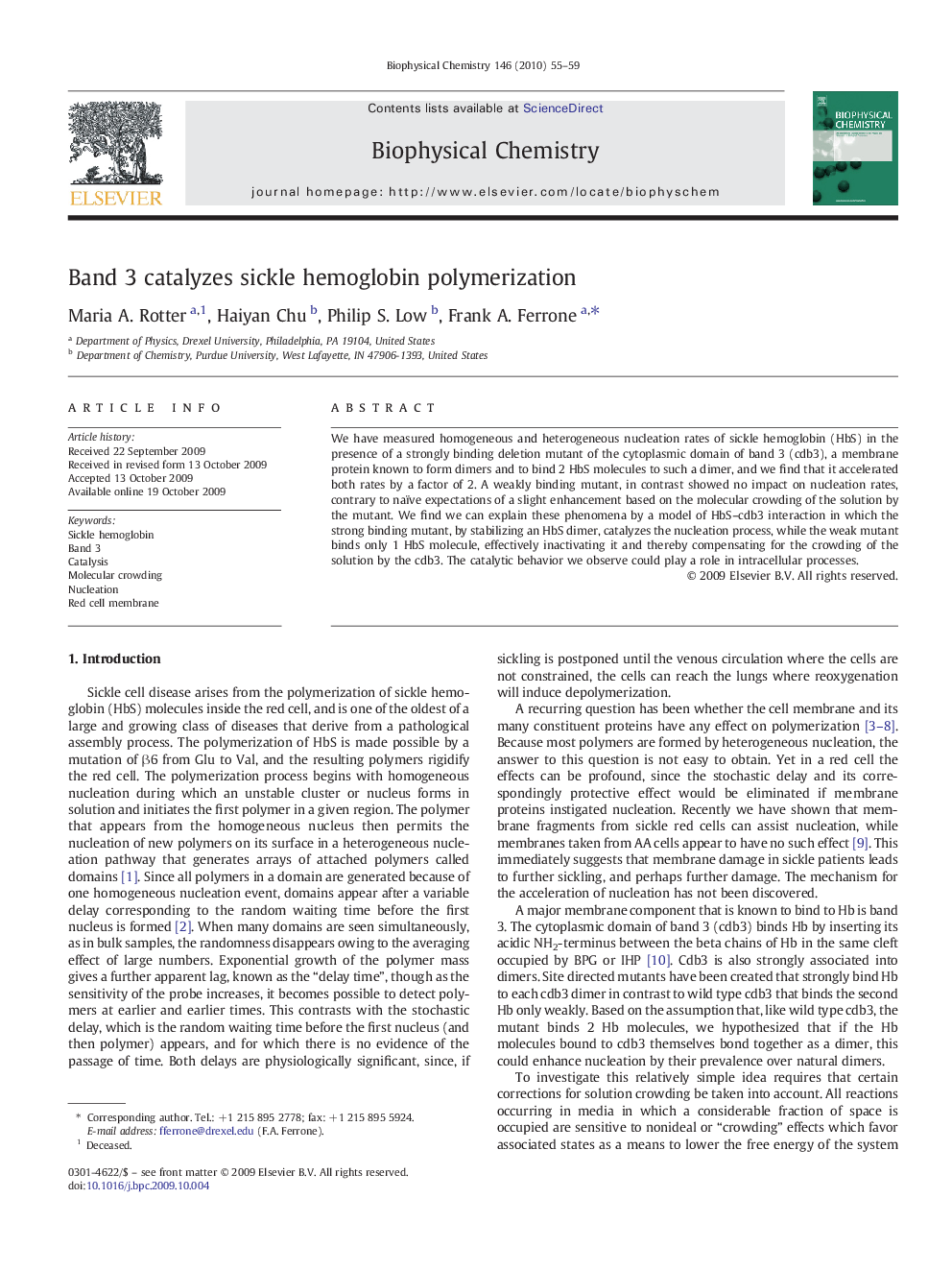| Article ID | Journal | Published Year | Pages | File Type |
|---|---|---|---|---|
| 5371665 | Biophysical Chemistry | 2010 | 5 Pages |
We have measured homogeneous and heterogeneous nucleation rates of sickle hemoglobin (HbS) in the presence of a strongly binding deletion mutant of the cytoplasmic domain of band 3 (cdb3), a membrane protein known to form dimers and to bind 2 HbS molecules to such a dimer, and we find that it accelerated both rates by a factor of 2. A weakly binding mutant, in contrast showed no impact on nucleation rates, contrary to naïve expectations of a slight enhancement based on the molecular crowding of the solution by the mutant. We find we can explain these phenomena by a model of HbS-cdb3 interaction in which the strong binding mutant, by stabilizing an HbS dimer, catalyzes the nucleation process, while the weak mutant binds only 1 HbS molecule, effectively inactivating it and thereby compensating for the crowding of the solution by the cdb3. The catalytic behavior we observe could play a role in intracellular processes.
